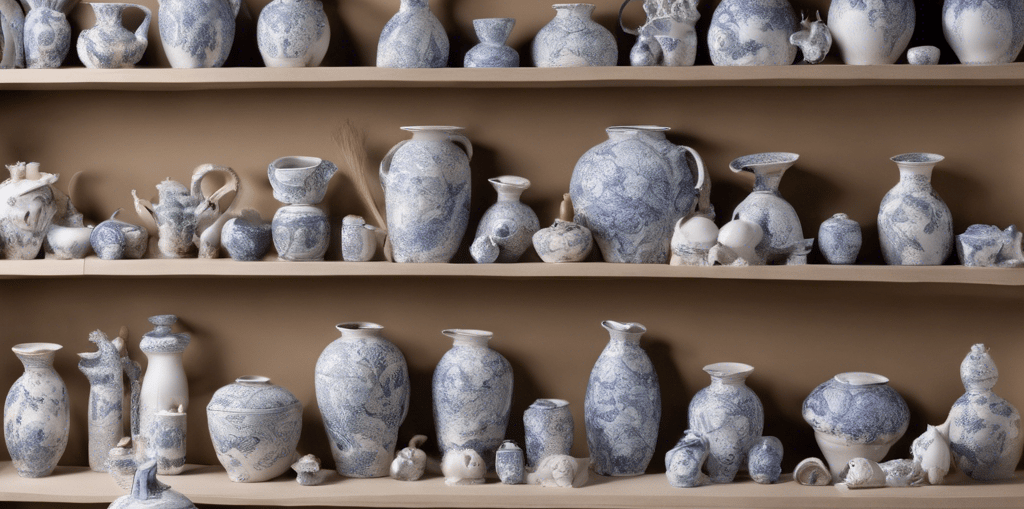✨ Get ₹100 OFF on orders above ₹499 — use code DECOR100
🛒 Plus, enjoy 15% OFF on photo paper above ₹200 with code PAPER!
Ceramics: A Timeless Legacy of Creativity and Utility
The Purple Decor
4/6/20242 min read


Introduction:
Ceramics, with their enduring legacy and remarkable versatility, have been an integral part of human civilization for millennia. From ancient pottery to modern industrial applications, ceramics have played a significant role in shaping societies and cultures around the world. This blog provides an overview of ceramics and delves into their historical significance, showcasing the timeless appeal of this remarkable material.
The Origins of Ceramics:
Ceramics trace their origins back to the dawn of civilization, with evidence of pottery dating back tens of thousands of years. Early humans discovered the transformative power of clay, shaping it into vessels for storing food and water. These primitive ceramics marked the beginning of humanity's relationship with this versatile material, laying the foundation for its widespread use in the centuries to come.
Ancient Civilizations and the Rise of Pottery:
The art of pottery flourished in ancient civilizations such as Mesopotamia, Egypt, Greece, and China. Each culture developed unique techniques and styles, reflecting their artistic sensibilities and technological advancements. In Mesopotamia, the invention of the potter's wheel revolutionized pottery production, allowing for the creation of more intricate and symmetrical vessels. Meanwhile, in China, the discovery of porcelain, a type of ceramic known for its translucency and durability, became highly prized and sought after by emperors and aristocrats.
Ceramics in Art and Architecture:
Throughout history, ceramics have been valued not only for their practical utility but also for their aesthetic beauty. From ornate vases and figurines to elaborate tiles and sculptures, ceramics have been used to adorn temples, palaces, and public spaces around the world. In ancient Greece, ceramic vessels were decorated with intricate patterns and scenes depicting mythology and daily life, showcasing the skill and artistry of craftsmen. Similarly, in Islamic art and architecture, vibrant ceramic tiles adorned mosques and palaces, creating stunning visual displays that continue to inspire awe to this day.
The Industrial Revolution and Beyond:
The advent of the Industrial Revolution brought about significant advancements in ceramic technology, paving the way for mass production and widespread use in various industries. Ceramics became indispensable in manufacturing processes, with applications ranging from automotive parts and electrical insulators to medical implants and aerospace components. The development of new materials and techniques, such as advanced ceramics and ceramic composites, further expanded the possibilities for innovation and engineering.
Conclusion:
In conclusion, ceramics have left an indelible mark on human history, spanning thousands of years and countless civilizations. From humble pottery to cutting-edge industrial applications, ceramics continue to captivate us with their timeless beauty and practical utility. As we look to the future, the legacy of ceramics remains as vibrant and enduring as ever, a testament to humanity's creativity, ingenuity, and enduring fascination with this remarkable material.
Join Our Community
Stay Updated
Quick Links
Delivery Partners
The Purple Decor
Welcome to The Purple Decor, where affordable luxury meets unmatched quality and sustainability commitment. Our collection of stylish home decor ceramics includes cups, mugs, vases, bathsets, and miniatures, designed to elevate your living space with elegance and charm. We take pride in offering high-quality products crafted with care, ensuring that each piece not only enhances your home decor but also reflects our dedication to sustainability. From enjoying your morning coffee in our chic mugs to adding a touch of sophistication with our exquisite vases, we strive to provide affordable luxury that aligns with your lifestyle and values. At The Purple Decor, we promise to deliver unparalleled craftsmanship and timeless design, allowing you to decorate your home with confidence and conscience. Experience the beauty of affordable luxury with our collection of home decor ceramics today.
